Thoughts: Field Notes on the Future of Food
By: Nicco Muratore
Tastes, purchasing and consuming habits, cooking methods, and customer expectations; they’re all changing. The farm-to-table trend is a growing trend and for some, it’s a demand when cooking at home or eating out. Dan Barber’s book, The Third Plate, Field Notes on the Future of Food, reflects on the history of thriving agriculture and the necessity of sustainable farming. As an aspiring chef in Boston, Nicco Muratore depicts his reflections on the book and thought-provoking stance on the future of farming and cooking.
Driving through the middle of the United States lush fields of green extend for miles in every direction. The corn sways in the wind; it’s easy to assume that this beautiful, rural scene is booming with thriving agriculture. Not so much…
From a distance this might look like a proper farming operation, growing sweet delicious corn for those late summer cookouts. But the truth of the matter is this food will never be served on a plate. This is agricultural misfortune, the death of the farm, and the epitome of the food systems of the United States today. This is feed corn, which is destined for an animal feedlot somewhere else in the country. This corn is inedible for humans.
Corn is a difficult plant to grow. It requires a significant amount of nutrients from the soil, including heaps of nitrogen. Chef Dan Barber compares it to “the biological equivalent of a McMansion.” Each year, the farmers in the grain belt grow the same corn in the same fields every year. It is easy to think that the grain belt has very fertile soil to be able to grown corn year after year. In reality these farmers are using chemicals and fertilizers to “return” nutrients to the soil. They are taking from the land year after year. All the while they give it nothing in return. The terrifying fact about modern agriculture is that we no longer “farm” according to any natural rules. This is no longer afield of corn, or a farm. It is a monoculture, and the death of agriculture and soil completely devoid of fertility and life.
A staggering 80% of crops grown in this country are grains. The grain belt is causing more harm than just taking up space in U.S. fields; its effects are ending up in our oceans. Barber explains, “The fertilizers and pesticides that feed our monocultures end up in the ocean… and has lead to the appearance of more than four hundred dead zones worldwide.”
The worst of these is an eight-thousand-square-mile dead zone in the Gulf of Mexico. This is a direct result of the chemicals and fertilizers used by the monocultures in the grain belt running off into the Mississippi river, which eventually leads to the Gulf of Mexico. Barber conveys the severity of the situation, “Most fish and shrimp, sensing the change in oxygen levels, swim to safer waters, leaving the area virtually deserted and paralyzing the local fishing industry.”
British scientist and “father of organic agriculture”, Sir Albert Howard, said that farming requires that we follow the “law of return”. If we take nutrients from the soil in the form of our crops, we must return what we have taken. Plants consume great amounts of nitrogen, phosphorous, and potassium, which are instrumental to their growth. Farmers must rotate their crops and grow plants that will restore each of these nutrients to the soil, and can be supplemented by natural fertilizers such as manure. However, many of these plants that “fix” and restore the nutrients for the soil are quite undesirable to the consumer (beans, peas, clover, barley, oats, rye, ect). While these crops do not make the farmer money, and seemingly are just taking up space, in reality these plants are the reason farming is possible.
As the United States became more populated, the need for greater amounts of food at a faster pace became apparent. In the late 1800s, German scientist Justus von Liebig came up with a “solution” for farmers. Liebig believed that farmers could bypass the nutrient restoration that crop rotation provides, and that farmers could add specific chemicals to make their soil fertile. This was seemingly very promising for farmers. David Montgomery, author of Dirt: The Erosion of Civilizations writes that,
“Now a farmer just had to mix the right chemicals into the dirt, add seeds, stand back and watch the crops grow. Faith in the power of chemicals to catalyze plant growth replaced agricultural husbandry and made both crop rotations and the idea of adapting agricultural methods to the land seem quaint… large-scale agro-chemistry became conventional farming.”
Liebig’s scientific approach seems ideal in the infant stage, but what really began was the start of man’s manipulation of nature, and a blueprint for how to do it. This way of thinking and manipulation unraveled thousands of years of farming work and stopped the conversation of “healthy soil”. Liebig opened the door for farmers to forget about what was happening under the soil, and let a few simple compounds “do the work” for them. Barber comments that, “If there is such thing as a smoking gun in the murder of soil, this was probably it”. When you strip away the life and vigor from the soil, there is a direct refection above ground in the plants that are grown.
In 1900, farms in the United States were more like the romantic image we have in our minds; fields filled with every crop imaginable, cows grazing in the fields happily, pigs roaming the farm foraging for their food, chickens making a ruckus at 5am, and maybe a farmer with overalls and a pitchfork. In 1900, farms were diversified. Ninety-eight percent of farms had chickens, 82% grew corn (for human consumption), 80% raised milk cows and pigs. Fast forward 100 years and only 4% of farms have chickens, 25% grow corn (for human consumption), 8% have milk cows, and 10% raise pigs. In addition to this, between 1950 and 1975, the number of farms in the country declined by half, and so did the number of people on the farms. The average size of the farms also significantly increased from 216 acres in 1950 to 416 in 1974. We have embarked on a long road to ruin any semblance of a sustainable agricultural system.
Conventional agriculture and big agri-business runs our country’s food system today. Large farming corporations have overtaken the industry and can produce food far cheaper than a small farm in northern Massachusetts. Aside from being unsustainable (getting peppers shipped from 3,000 miles away to a local grocery store chain), conventional farming has destroyed the true flavor of vegetables and livestock. This is a sad, undeniable fact, especially when a summer farm-grown heirloom tomato sits next the mediocre grocery store equivalent—let alone comparing the size and flavor of a free range, antibiotic-free chicken to a factory farmed broiler. However, there is an opportunity to rediscover our regional American farming cultures and a sustainable food system.
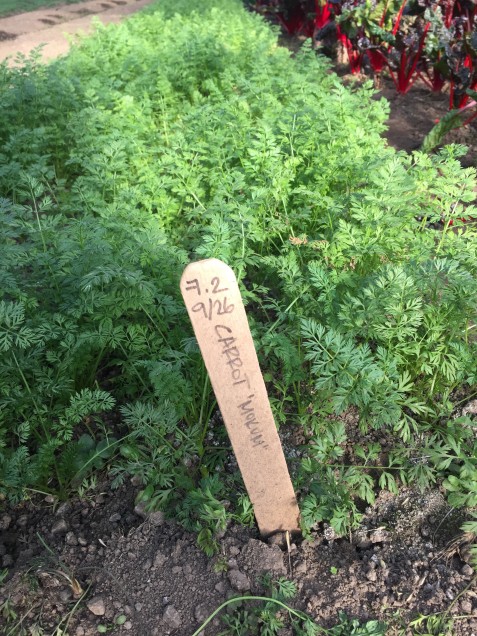
Farm-to-table is a term that we hear a lot these days at restaurants. Chefs and restaurateurs alike have latched on to the farm-to-table concept that has become increasingly popular in the last 15 years. True farm-to-table dining and whole farm cooking is an idyllic goal when executed properly. However, this term has become incredibly overused, and allows chefs to pick and choose what they want from the farms. Barber explains this paradox, “The larger problem, as I came to see it, is that farm-to-table allows, even celebrates, a king of cherry-picking of ingredients that are often ecologically demanding and expensive to grow.” This is not to downplay the positive effects the movement has had. The farm-to-table movement introduced local farms to the spotlight.
Today, farmers markets are everywhere, and organic vegetables are readily available (although at a higher price). However, large agri-business has been unaffected and the way this country grows and eats food has not changed. American’s eat with a “heavy hand”, with meat-centric meals complimented by a starch and a vegetable; this is what is expected of a typical dinner. We have lost sight of the culture that used to be involved in food, farming, and eating. Barber explains that, “In the rush to industrialize farming, we’ve lost the understanding, implicit since the beginning of agriculture, that food is a process, a web of relationships, not an individual ingredient or commodity.”
This is reflective in restaurants as well. Barber asks the question, is a restaurant menu really sustainable? Most of the time, the answer is no. Farms are not dictating what chefs serve. Chefs are dictating what farmers grow, and the farmers are servicing the chef. In business with such small margins, small farms are forced to grow what every chef wants—in the summer, think corn, tomatoes, zucchini, all of which are incredibly taxing on the land and expensive to grow. Barber writes, “We forget that for most of human history, it happened the other way around. We foraged, and then out of sheer necessity, transformed what we found into something else—something more digestible and store-able, with better nutrition and flavor.”
Stone Barns Center for Food and Agriculture, located in Pocantico Hills, New York, “aims to change the way America eats and farms”. The farm and center are also the home of Dan Barber’s farm location of Blue Hill Restaurant (the other in Manhattan). The farm grows more than 500 varieties of plants and raise livestock including pigs, chickens, geese, and sheep. During the summer months, the animals roam free on the property and forage for grasses and roots in the fields. Stone Barns also has a 23,000 square foot greenhouse that allows the farm to continue growing throughout the winter. The farm and agricultural center’s goal is to spread the message of sustainable food and educate as many people as possible—and it’s working, as they had more than 100,000 visitors last year. At Stone Barns, Barber and his teams have the opportunity study, research, and teach about a sustainable future for food.
Barber aims to create a true farm-to-table system and a sustainable way of farming, cooking, and serving at Stone Barns. But even he admits that this can be difficult. Barber tells the story of an incident with guests from Gourmet Magazine.) Barber wanted the meal to be farm-centric, and showcase the lost varieties of plants that the farm had rediscovered. The meal started with a summer gazpacho and a salad with a very old variety of iceberg lettuce with considerable flavor (very different from the typical water-filled, tasteless iceberg) The third course was a piece of Bluefin tuna that had been caught the day before off the coast of Long Island with a stew of early summer vegetables; this turned out to be a huge mistake. Bluefin tuna, with incredible fat marbling, is a prized item to both serve and eat, however, is one of the most over-fished and unsustainable species in the ocean.
The plates of tuna left the kitchen. A few moments later, the server came back to the kitchen confused and reported that, “they were deep in conversation”. The plates came back to the kitchen; the vegetables had been picked at, but not one guest had even tasted the tuna. Barber knew he had made a fatal error and explains that, “You don’t wear the high ideals of sustainability on your sleeve—you don’t gloat about saving old, forgotten seeds of lettuce—and then serve a plate of Bluefin.” The diners were horrified by this paradox, and Barber knows that it ruined the meal.
In the United States, one third of seafood is eaten in restaurants. And what kind of fish are we eating and serving? Tropic fish that lives on the top of the food chain: salmon, cod, swordfish, tuna, and halibut. When removed from their environments, their ecosystems are destroyed. We are serving the wrong kind of fish. The problem with this is that chefs have popularized these trophic fish. Barber laments on this sad truth, “You might say that chefs helped create their own positive feedback loop: by cooking with these fish, we advertise their virtues and make them more popular, which increases demand and drives up prices. It’s little wonder that most of these species—salmon, halibut, swordfish, cod, grouper, skate, founder, and of course tuna—have declined by 90 percent in just the past few decades.”
Barber, adamant on learning more about sustainable seafood and the future of fish, traveled to Spain to visit a restaurant and a fish farm. There are many arguments against aquaculture, namely that it is inefficient. A farmed fish must be fed twice its weight in wild fish to get it to market weight, meaning additional fish are taken from the ocean just to feed fish kept in captivity. Barber refers to this as, “borrowing from Peter to pay Paul.”
In Spain, there is an exception to the rule; Veta la Palma, a fish farm with series of canals and connecting ponds thriving as its own ecosystem, where the land meets the sea. Veta la Palma is known for producing some of the worlds best tasting sea bass and mullet—and sustainably. The water flows in to the canals and ponds from the ocean, and with it comes the phytoplankton that is essential to marine life. Small shrimp eat the phytoplankton and the bass eat the shrimp. For the majority of the year they do not need to use fish feed as the natural productivity of the system is so incredibly high. Although it takes twice as long as traditional aquaculture for a fish to reach market weight (30 months as opposed to 15), the system is working at a natural pace and nature is not rushed nor manipulated. The lead biologist, Miguel, explains that in order to have a true vibrant ecosystem, you must have all life present. This means that Veta la Palma is home to many thousands of birds that contribute to the natural ecosystem. Barber is very confused by this; Miguel admits that the farm loses 20% of their fish eggs to birds each year, “We’re farming extensively, not intensively. This is the ecological network. The flamingos eat the shrimp, the shrimp eat the plankton, so the pinker the bellies [of the flamingos], the better the system. The quality of the relationships matter more than the quantity of the catch.”
This knowledge directly transfers to the natural ecosystems that need to exist for proper farming (crop rotations, and returning nutrients to the soil Barber simplifies this, “ The bottom line is, you must embrace life, which is to say all life, not just what you’re trying to grow [or catch].”
An hour from Veta la Palma, Barber heads to Aponiente, led by chef Angel Leon, or more commonly refered to as “the chef of the sea”. Leon believes that it is his responsibility to serve fish that might otherwise be thrown away or discarded during commercial fishing. .“Can you guess out of every ton of fish caught, how much is kept on board? Six hundred kilos! The rest, either dead or damaged, are dumped right back in,” said Leon on why he dedicated his career to “being the caretaker” for the other 400 kilos of daily discarded catch.
Back at Stone Barns, not long after a transformative meal with Leon, Barber was checking a fish delivery from their main supplier. He saw a large tub of cod heads in the back of the truck. “Heading to Chinatown?” he asks Howard, the driver. “Sell the heads?” he responds with a laugh, “Hell no, I throw them away myself.”. Barber took the whole bin of heads, and continues to serve them on the Blue Hill menu ever since.
A Visit to the Stone Barns Agricultural Center: January 2015
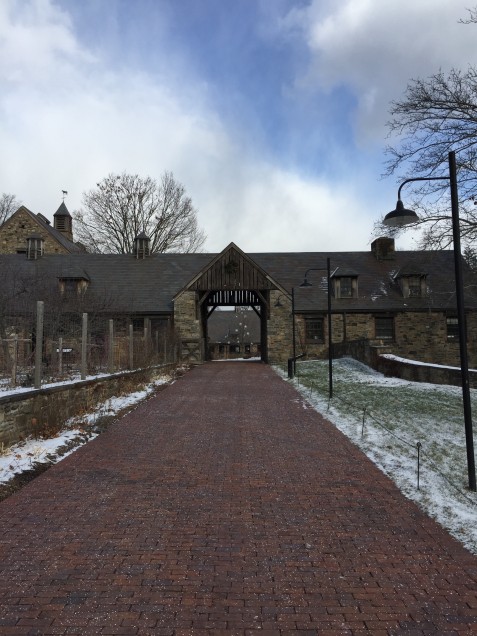
It was cold and snowy as I approached the gates of Stone Barns. A brisk 20-degree day is not the most ideal for visiting a farm, but for me this was the most exciting part of my week. I had been looking forward to coming here for a long time. Every aspiring chef and cook knows of Dan Barber and the impressive farm-restaurant relationship that exists between Blue Hill and Stone Barns.
The farm was relatively empty as I stopped at the visitor’s center. I found my way to the very small Blue Hill Café, and convinced myself that 10:45 am was a perfect time for a house-made bologna sandwich on fresh-baked rye bread. The sandwich was out of this world, full of flavor and life with bologna made in-house, freshly-picked greens, and bread made that morning. I remind you, this is just the café.
Once I finished my sandwich-and-coffee break, I was off to tour the farm. The fields were empty, as the ground was quite frozen and devoid of plant life at this point in the season. Upon entering the greenhouse, I was blown away. I had never seen a greenhouse so full of life, let alone in the middle of January! Row after row of French breakfast radishes, Hakurei turnips, Bejo kale, oak leaf lettuce, Swiss chard, English peas, Mokum carrots, red malabar spinach, mustard greens, Sora radish, fenugreek, and more.
The farm plants some roots vegetables that are incubated in the greenhouse, before they are transferred to the fields in the spring. Even in the dead of winter in the Hudson Valley, Stone Barns is still growing and planning for the seasons ahead.
As I stood there, I realized I was looking at one of the truest expressions of a sustainable farm-to-table system.
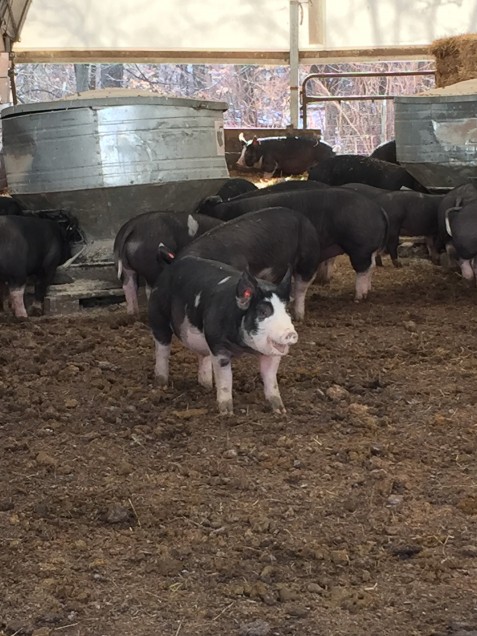
The Local Players
Meet Chive, a sustainable catering company based in Beverly, Mass. that is dedicated to serving local food and educating their clients. Jennifer Freedson, co-owner and event designer for Chive says they strongly believe in buying local and building partnerships with nearby farms.
Strictly sourcing from local farms, it is difficult for Chive to give their guests an exact menu; they let the farms dictate the menu, a rare practice. “Grow what you grow best—and we will put it on our menus, ” said Jennifer who is ahead of the curve when it comes to locality and sustainability.
Chive sees their events as opportunities to start the conversation and reeducate the public on the future of food and surrounding resources. Proponents of the sustainable food movement have a responsibility to raise community awareness, and Chive is doing this at each and every event.
Ana Sortun, James Beard Award-Winning Chef of Oleana, Sofra, and Sarma restaurants in Cambridge, Mass., has been buying locally for 23 years ever since she started driving past a produce farm in Concord on her way to work.
Once Ana moved into Cambridge and opened Oleana, she still wanted local products from Concord but the farm was too small to have a daily truck delivery. Determined to bring farm produce to the city, she acted as liason between fellow local-produce seeking chefs and the farms.
Fourteen years later, Ana is still connecting Boston-area chefs to nearby farms. In 2002, Ana met and married Chris Kurth, organic farmer of the 90-acre Siena Farms in Sudbury. Siena Farm supplies Ana’s restaurants with 95% of its produce during the summer growing season.
Ana explained that chefs must write their menus around what the farm has to offer, and added that, “whatever the farm is doing, you are doing”. Chris knows what grows best, and it is Ana’s job to be able to use and serve everything that grows during the season.
In today’s Boston community, people care about food more than ever. This year is a pivotal moment in this conversation; where the opportunity to bring sustainability and locality is in the spotlight, ready to be harvested.
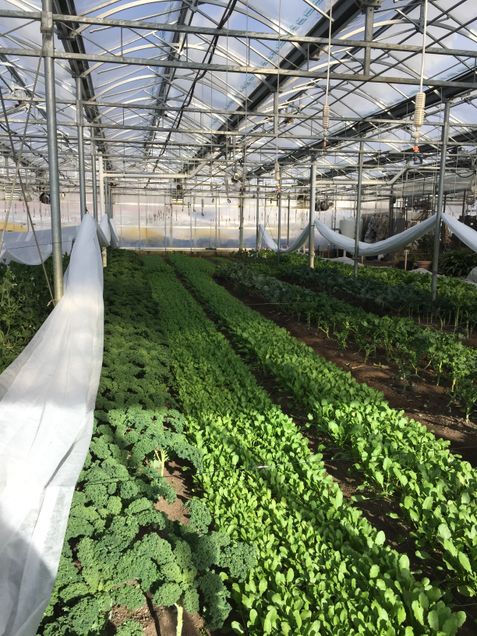
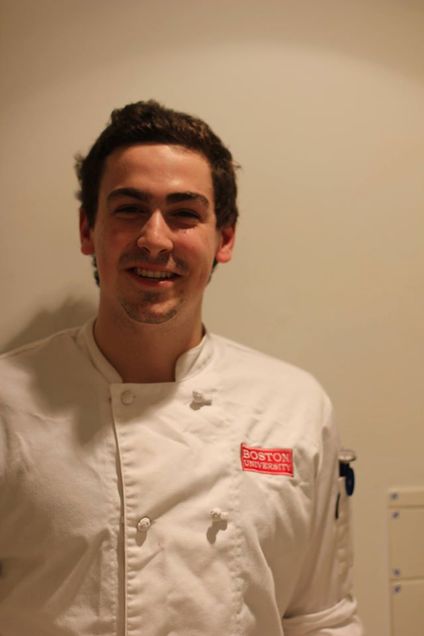
19 comments
This particular papers fabulous, and My spouse and i enjoy each of the perform that you have placed into this. I has been additionally pleased mysite
Thanks For Sharing The Very Informative Helpful Blog Also, Visit:-
Bring Lost Love Back
I think that in the future, people will approach the choice of food based on the benefits and naturalness. I love natural food and especially I like to eat various green salads with lots of hemp oil. I also use natural weed for my mental health https://westcoastsupply.cc/product/slurricane/ and this approach makes me feel great. How do you take care of your mental health?
It is truly a pleasure to be able to leave a comment on such a highly respected and well-regarded blog. The insights and perspectives shared on this platform are truly thought-provoking and have the ability to spark meaningful conversations and discussions.
One aspect
of the blog that I particularly appreciate is the level of expertise and
knowledge that is evident in the content. The authors clearly have a deep
understanding of their respective fields and are able to communicate complex
ideas in a clear and concise manner. Additionally, the use of data, statistics
and research adds a level of credibility and authority to the blog.
I also
appreciate the variety of topics that are covered on the blog. From current
events and news, to more niche and specialized subjects, there is something for
everyone. This diversity of content is a testament to the dedication and
passion of the authors and editors who work to ensure that readers are exposed
to a wide range of perspectives and ideas.
Another
aspect of the blog that I find valuable is the interactive nature of the
platform. The ability to leave comments and engage in discussions with other
readers is a wonderful feature that allows for the exchange of ideas and the
fostering of a sense of community.
In conclusion,
this blog is an excellent source of information and inspiration. The quality of
the content and the dedication of the authors make it a must-read for anyone
interested in staying informed and engaged on a wide range of topics. I look
forward to continuing to be a regular reader and participant in the discussions
on this blog.
In conclusion, this blog is an excellent source of information and inspiration. The quality of the content and the dedication of the authors make it a must-read for anyone interested in staying informed and engaged on a wide range of topics. I look forward to continuing to be a regular reader and participant in the discussions on this blog. https://crowcrowcrow.com
This site provides a wealth of useful information and creative ideas in one convenient location basket random. Anybody who is interested in keeping informed and involved on a wide variety of issues should read it because of the high quality of the information and the devotion of the authors who created it.
I stood in the middle of the lush green field of moong (green gram) and looked around me. It was just before sunrise and the sky was turning a bright range. Ref : ISO Consultancy
I’ve read some good stuff here. Definitely worth this mark for reconsideration. I’m not sure why but this site Car Games is pretty awesome for me.
good post thanks for share
https://iphonnee14.blogspot.com/2023/08/iphone14.html
I want thank for sharing and invite you play octordle with everyone.
I expect everything to be even more “streamlined” overall. Even 10 years ago I was mostly eating off fishing and hunting I did during seasons(it was pretty good deal, especially considering I had everything outside of tags for hunting, even https://gritroutdoors.com/hunting/ pretty good gear, similar to this stuff). Now it’s just not feesible anymore, tags got much more expensive and even ammo is on the rise…
I think that in the future, people will approach the choice of food based on the benefits and naturalness. Mors Alfabesi Bileklik
Anybody who is interested in keeping informed and involved on a wide variety of issues should read it because of the high quality of the information and the devotion of the authors who created it. Çift Bileklikleri çift bileklik
Local Players and Sustainable Practices: The inclusion of local businesses like Chive and Chef Ana Sortun’s commitment to sourcing locally adds a positive dimension to the narrative. It showcases the efforts of individuals and businesses that prioritize sustainable and community-driven approaches to food production and consumption, encouraging a shift in the conversation towards more responsible practices. https://import-from-egypt.com
Eye-Opening Agricultural Realities: The article provides a stark portrayal of the current state of agriculture in the United States, particularly the impact of monocultures and industrial farming on soil health and marine ecosystems. It sheds light on the unintended consequences of certain farming practices, such as the creation of dead zones in oceans due to fertilizer runoff. https://vegfruexpo.com
I’ve been using Help with Psychology Assignment for the past year, and it has significantly enhanced my understanding of complex psychological theories and concepts. The platform’s interactive approach and expert guidance have helped me tackle challenging assignments with confidence. Whether it’s analyzing case studies or interpreting statistical data, their support has been indispensable in my academic journey.
Anybody who is interested in keeping informed and involved on a wide variety of issues should read it because of the high quality of the information and the devotion of the authors who created it. Çift Bileklikleri,,…thanks for shaiirng information
Anybody who is interested in keeping informed and involved on a wide variety of issues should read it because of the high quality of the information and the devotion of the authors who created it. Çift Bileklikleri,,…thanks for shaiirng information best content https://bolly4u.mom
New Istanbul Airport to Besiktas Transfer,Their long awaited vacation starts with us, please enjoy the ride to the hotel and not have to worry about transportation. Istanbul New Airport to Besiktas Transfer